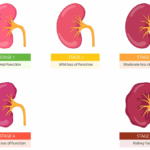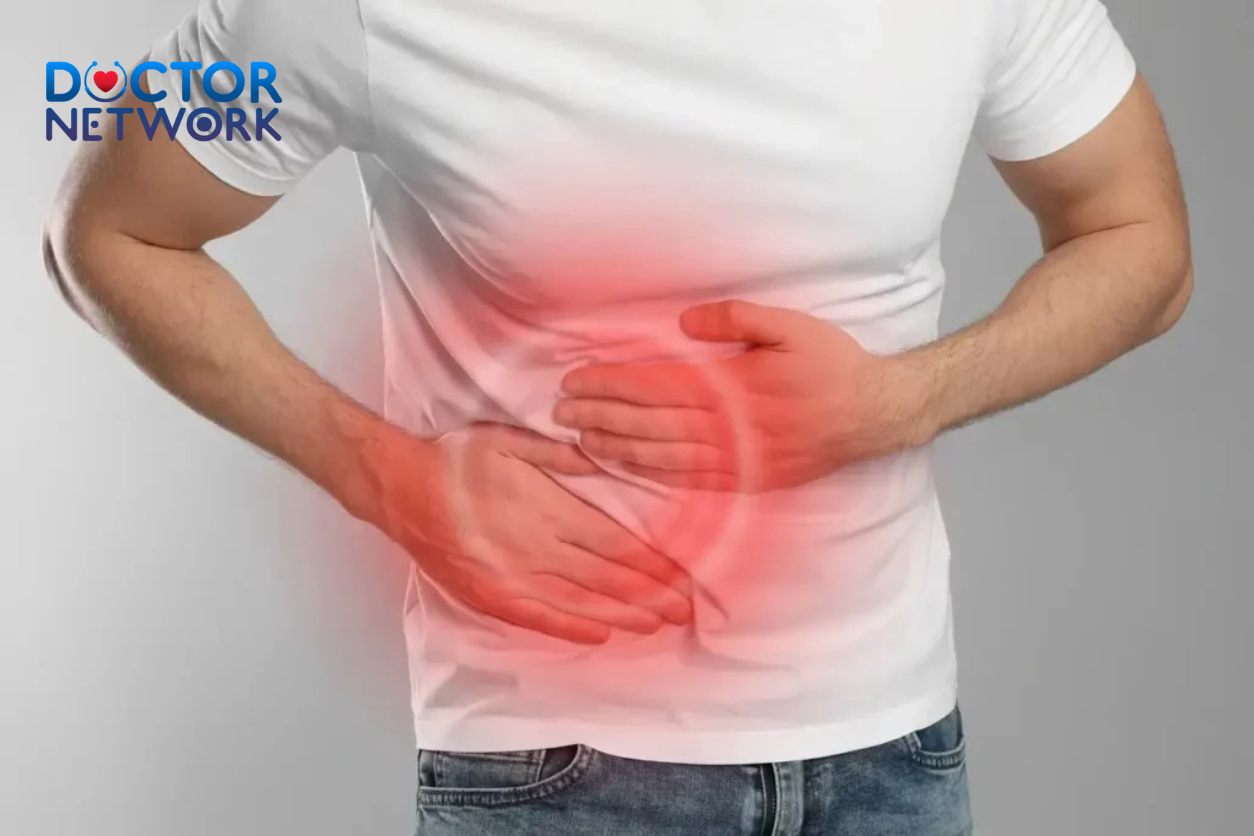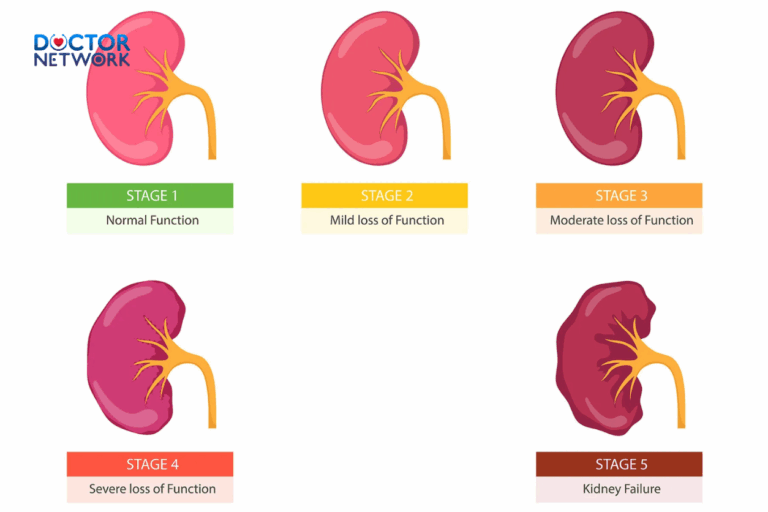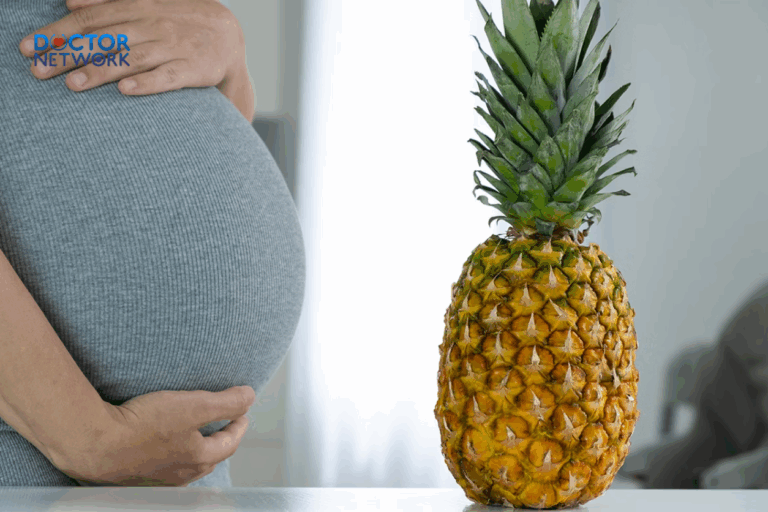What to Do Instead of Douching? – Douching disrupts the vagina’s natural self-cleaning mechanisms and beneficial bacterial ecosystem, leading to increased infection risks, pH imbalances, and serious complications including pelvic inflammatory disease and infertility. The safest alternative to vaginal douching involves allowing the body’s natural processes to function while practicing gentle external hygiene, maintaining proper moisture balance, and supporting the vaginal microbiome through evidence-based lifestyle modifications.
This comprehensive guide examines why medical professionals universally discourage douching practices, explores the science behind vaginal self-maintenance, and provides detailed alternatives that promote optimal intimate health. We’ll analyze the role of Lactobacillus bacteria in maintaining vaginal pH balance, discuss safe hygiene practices for the vulvar area, review beneficial products that support natural bacterial flora, and outline warning signs requiring professional medical evaluation.
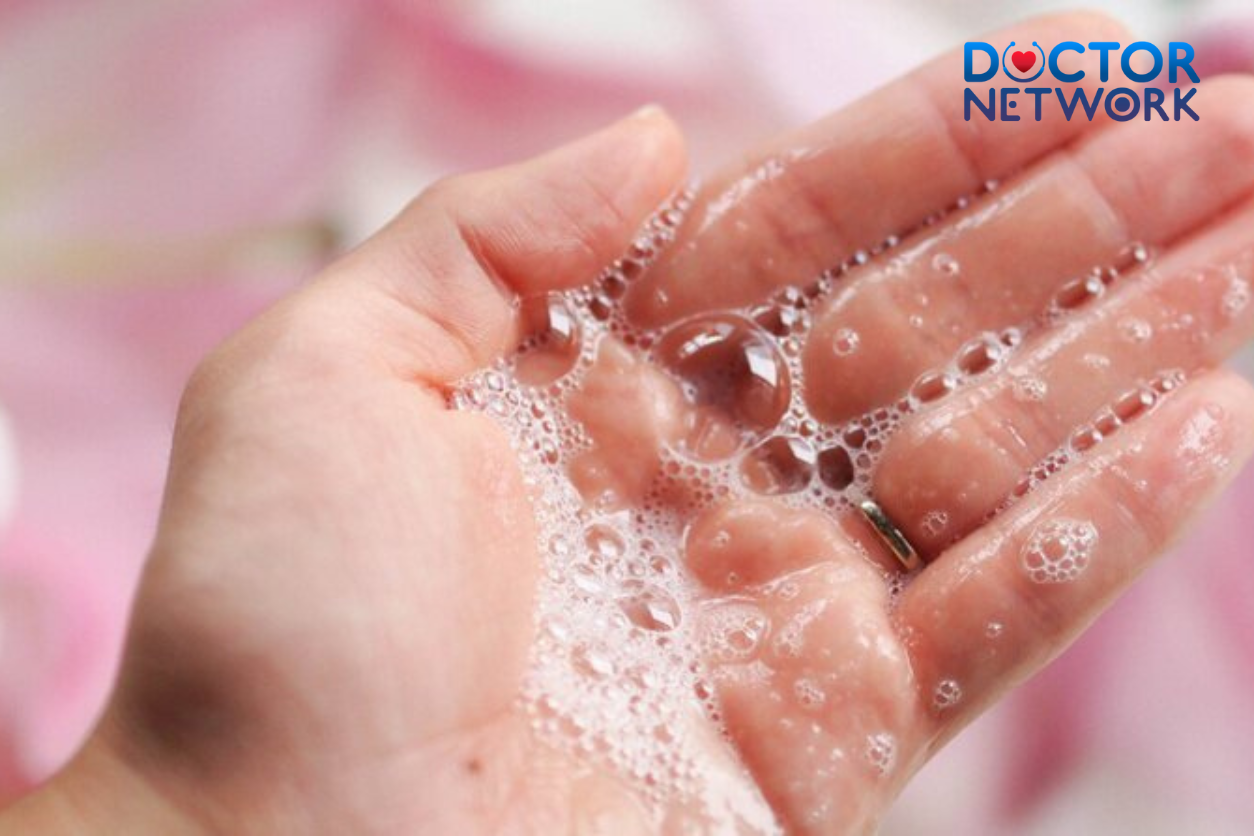
Understanding Vaginal Douching: Definition and Prevalence
Vaginal douching refers to the practice of rinsing or cleaning inside the vagina with water, vinegar solutions, baking soda mixtures, or commercial douching products. This procedure involves introducing liquid into the vaginal canal through specialized applicators or improvised devices, ostensibly for cleansing, odor control, or perceived hygiene benefits.
Anal douching, a related practice, involves flushing the rectum with water or cleansing solutions before intimate activities. Both practices share similar risks of tissue damage, bacterial disruption, and increased infection susceptibility.
Statistical Overview and Demographics
According to the Centers for Disease Control and Prevention (CDC), approximately 18% of American women aged 15-44 reported douching at least once during 2016. This statistic represents millions of women engaging in a practice that healthcare professionals consistently discourage due to documented health risks.
Common Motivations for Douching:
- Perceived cleanliness enhancement and odor elimination
- Post-menstrual or post-coital hygiene rituals
- Cultural or religious traditions passed through generations
- Commercial marketing influence promoting “feminine freshness”
- Misguided attempts to prevent pregnancy or sexually transmitted infections
Industry Influence on Misconceptions
The feminine hygiene industry generates billions annually by promoting products that target women’s insecurities about natural body odors and secretions. Marketing campaigns frequently suggest that vaginal odors require external intervention, contradicting medical evidence about normal physiological processes.
These commercial messages exploit societal taboos surrounding female sexuality and natural body functions, creating artificial needs for products that potentially harm rather than help vaginal health. Understanding this marketing manipulation helps women make informed decisions based on medical evidence rather than advertising claims.
Why Douching Is Medically Contraindicated
The vagina functions as a self-regulating ecosystem with sophisticated mechanisms for maintaining optimal health without external intervention. Medical research consistently demonstrates that douching disrupts these natural processes, creating more problems than it purports to solve.
The Vaginal Microbiome: A Complex Bacterial Ecosystem
Healthy vaginas harbor diverse microbial communities dominated by Lactobacillus species, which produce lactic acid to maintain an acidic environment with pH levels between 3.8-4.5 in premenopausal women. This acidic milieu prevents pathogenic bacteria and fungi from establishing harmful colonies.
Lactobacillus bacteria serve multiple protective functions:
- Acid Production: Generate lactic acid and hydrogen peroxide that inhibit pathogen growth
- Competitive Exclusion: Occupy binding sites that prevent harmful bacteria from adhering to vaginal walls
- Immune Modulation: Communicate with immune cells to maintain appropriate inflammatory responses
- Barrier Function: Form biofilms that physically protect vaginal tissues
The vaginal microbiome changes throughout menstrual cycles, responding to hormonal fluctuations that influence bacterial composition and vaginal secretions. These natural variations represent healthy adaptations rather than problems requiring correction.
Documented Health Risks of Douching
Medical literature extensively documents the adverse consequences of vaginal douching, establishing clear causal relationships between this practice and various gynecological conditions.
| Health Condition | Risk Increase | Mechanism of Action |
|---|---|---|
| Bacterial Vaginosis | 2-3x higher | Lactobacillus depletion, pH elevation |
| Yeast Infections | 1.5-2x higher | Microbiome disruption, tissue irritation |
| Pelvic Inflammatory Disease | 73% increased risk | Bacterial ascension to upper reproductive tract |
| Ectopic Pregnancy | 2x higher | Fallopian tube damage from chronic infections |
| Preterm Birth | 40% increased risk | Ascending infections during pregnancy |
Bacterial Vaginosis and Microbiome Disruption
Bacterial vaginosis (BV) represents the most common immediate consequence of douching, occurring when harmful bacteria overgrow due to Lactobacillus depletion. BV symptoms include fishy odors, gray discharge, and vaginal irritation – ironically, the very problems douching claims to address.
The condition creates a vicious cycle where women douche to eliminate odors, which worsens bacterial imbalances and intensifies malodorous symptoms. This pattern can persist for months or years without proper medical intervention to restore healthy bacterial populations.
Pelvic Inflammatory Disease Complications
Pelvic Inflammatory Disease (PID) occurs when bacteria ascend from the vagina through the cervix to infect the uterus, fallopian tubes, and ovaries. Douching increases PID risk by:
- Mechanical Transportation: Forcing bacteria upward through the reproductive tract
- Barrier Compromise: Damaging cervical mucus barriers that normally prevent bacterial ascension
- Immune Suppression: Disrupting local immune responses that control bacterial populations
PID consequences include chronic pelvic pain, infertility, ectopic pregnancies, and life-threatening complications requiring emergency surgical intervention.
Anal Douching Risks and Complications
Rectal douching carries distinct risks related to the anatomy and function of the lower gastrointestinal tract. The rectum lacks the self-cleaning mechanisms present in the vagina, making it more vulnerable to traumatic injury from douching practices.
Primary Complications Include:
- Tissue Damage: Rectal mucosa tears and hemorrhoidal irritation
- Electrolyte Imbalances: Fluid absorption leading to dangerous sodium depletion
- Infection Risk: Increased susceptibility to HIV and other sexually transmitted infections
- Bowel Function Disruption: Interference with normal defecation patterns
Evidence-Based Alternatives to Douching
Medical professionals recommend multiple strategies that support natural vaginal health without disrupting beneficial bacterial ecosystems or causing tissue damage. These alternatives address legitimate hygiene concerns while respecting physiological processes.
Embracing Natural Vaginal Function
The most effective alternative to douching involves understanding and trusting the vagina’s inherent self-cleaning capabilities. Vaginal secretions serve essential functions including waste removal, lubrication, and bacterial balance maintenance.
Normal vaginal odors vary considerably among individuals and throughout menstrual cycles, ranging from metallic (during menstruation) to sweet, earthy, or mildly acidic scents. These variations reflect healthy hormonal changes rather than hygiene problems requiring intervention.
Red Flag Odors Requiring Medical Evaluation:
- Strong fishy smells (often indicating bacterial vaginosis)
- Foul, rotten odors (suggesting serious infections)
- Sweet, fruity scents (potentially indicating diabetes)
- Chemical or medicinal odors (possible medication effects)
Proper External Hygiene Techniques
Appropriate intimate hygiene focuses exclusively on external genital areas (the vulva) while avoiding internal vaginal cleansing that disrupts natural bacterial populations.
Optimal Cleansing Protocol:
- Water Temperature: Use lukewarm water to prevent tissue irritation
- Gentle Technique: Clean with fingertips or soft washcloths using light pressure
- Directional Wiping: Always clean from front to back to prevent bacterial contamination
- Product Selection: Choose fragrance-free, pH-balanced cleansers specifically formulated for intimate areas
- Drying Method: Pat dry with clean towels rather than rubbing vigorously
Understanding pH-Balanced Products
Conventional soaps typically have alkaline pH levels (8-10) that can disrupt vaginal acidity and promote harmful bacterial growth. pH-balanced intimate cleansers maintain acidic formulations (pH 3.5-5.5) that support natural vaginal chemistry.
Quality pH-balanced products contain:
- Lactic Acid: Supports natural acidification processes
- Minimal Ingredients: Reduces allergic reaction risks
- No Fragrances: Eliminates common irritants
- Gentle Surfactants: Clean without stripping natural oils
Reputable brands include Good Clean Love, HER Intimate Care, and other companies focusing specifically on vaginal health rather than general cosmetic applications.
Moisture Management Strategies
Excessive moisture creates favorable conditions for fungal overgrowth, particularly Candida species that cause yeast infections. Effective moisture control involves both immediate drying techniques and longer-term lifestyle modifications.
Immediate Moisture Control:
- Post-Bathing: Thoroughly dry genital areas with clean, dry towels
- Swimming Protocol: Change out of wet swimwear immediately after water activities
- Exercise Hygiene: Remove sweaty workout clothes promptly and shower when possible
- Sleep Habits: Consider sleeping without underwear to promote air circulation
Breathable Clothing Choices
Fabric selection and clothing fit significantly impact vaginal health by influencing moisture retention, air circulation, and bacterial growth patterns. Cotton underwear remains the gold standard for intimate apparel due to its natural breathability and moisture-wicking properties.
Optimal Clothing Guidelines:
| Fabric Type | Breathability Rating | Moisture Management | Recommendation |
|---|---|---|---|
| 100% Cotton | Excellent | Superior wicking | Strongly recommended |
| Cotton Blends | Good | Moderate wicking | Acceptable alternative |
| Synthetic Materials | Poor | Moisture retention | Avoid for daily wear |
| Silk | Fair | Limited breathability | Occasional use only |
Additional Clothing Considerations:
- Fit: Choose loose-fitting pants and skirts to promote air circulation
- Seams: Avoid rough seams that can cause friction and irritation
- Washing: Use fragrance-free detergents and avoid fabric softeners
- Frequency: Change underwear daily, more often during illness or heavy perspiration

What to do instead of douching
Nutritional and Lifestyle Factors Supporting Vaginal Health
Comprehensive vaginal health extends beyond topical care to encompass systemic factors that influence immune function, hormonal balance, and microbial populations. Evidence-based lifestyle modifications can significantly improve intimate health outcomes.
Immune System Support
A robust immune system maintains optimal vaginal bacterial balance and prevents pathogenic overgrowth. Multiple lifestyle factors influence immune function and subsequently affect vaginal health.
Key Immune-Supporting Strategies:
- Adequate Sleep: Maintain 7-9 hours nightly to support immune cell regeneration
- Regular Exercise: Moderate physical activity enhances immune function without causing excessive stress
- Stress Management: Chronic stress elevates cortisol levels that suppress immune responses
- Hydration: Proper fluid intake supports mucous membrane health and toxin elimination
Dietary Considerations for Vaginal Health
Nutritional choices directly influence vaginal pH, bacterial populations, and overall gynecological health. Certain foods promote beneficial bacterial growth while others may contribute to infections or imbalances.
Foods Supporting Vaginal Health:
- Probiotic-Rich Foods: Yogurt, kefir, fermented vegetables containing live Lactobacillus cultures
- Prebiotic Foods: Garlic, onions, asparagus that feed beneficial bacteria
- Antioxidant Sources: Berries, leafy greens that reduce inflammatory responses
- Omega-3 Fatty Acids: Fish, flaxseeds supporting healthy mucous membranes
Foods to Limit:
- Excessive Sugar: Promotes yeast overgrowth and bacterial imbalances
- Processed Foods: Often contain additives that disrupt natural bacterial populations
- Alcohol: Can interfere with immune function and bacterial balance
- Artificial Sweeteners: May alter gut and vaginal microbiomes
Essential Hygiene Practices
Beyond intimate area care, general hygiene practices significantly impact vaginal health by preventing bacterial contamination and supporting overall wellness.
Critical Hygiene Protocols:
- Post-Urination: Wipe from front to back using clean toilet paper
- Post-Intercourse: Urinate within 30 minutes to flush potential pathogens from the urethral opening
- Hand Hygiene: Wash hands thoroughly before touching genital areas
- Safe Sex Practices: Use barrier methods to prevent sexually transmitted infections
- Regular Screening: Obtain routine STI testing based on risk factors and medical recommendations
Beneficial Products for Vaginal Health Support
When natural approaches require additional support, specific products can enhance vaginal health without causing the disruption associated with douching. These evidence-based interventions target specific aspects of vaginal wellness.
Personal Lubricants and Moisturizers
High-quality personal lubricants serve multiple functions beyond sexual activity, including daily comfort and vaginal tissue health maintenance. However, product selection requires careful attention to ingredient safety and pH compatibility.
Ingredients to Avoid: Traditional lubricants often contain seven harmful ingredients that can damage vaginal tissues and disrupt bacterial populations:
- Glycerin: Metabolized by bacteria and yeast, potentially feeding infections
- Parabens: Hormone-disrupting preservatives linked to bacterial imbalances
- Propylene Glycol: Can cause tissue irritation and allergic reactions
- Chlorhexidine: Antimicrobial agent that kills beneficial bacteria
- Nonoxynol-9: Spermicide that damages vaginal tissues
- Petroleum-Based Ingredients: Can trap bacteria and interfere with natural processes
- Artificial Fragrances: Common allergens causing inflammation and irritation
Recommended Product Characteristics:
- Short Ingredient Lists: Minimal formulations reduce reaction risks
- Natural Bases: Water or plant-based rather than petroleum derivatives
- pH Matching: Formulated to match natural vaginal acidity (3.5-4.5)
- Organic Certification: Ensures absence of pesticides and synthetic additives
Good Clean Love Almost Naked Personal Lubricant exemplifies these principles with its clean ingredient profile and pH-balanced formulation designed specifically for vaginal health compatibility.
Probiotic and Prebiotic Interventions
Targeted probiotic supplementation can help restore beneficial bacterial populations, particularly after antibiotic treatments or during recurrent infections. Both oral and topical probiotic approaches show promise in clinical research.
Oral Probiotic Benefits:
- Systemic Support: Enhance overall immune function and bacterial balance
- Gut-Vagina Connection: Healthy intestinal bacteria can migrate to vaginal areas
- Convenience: Easy integration into daily wellness routines
- Research Support: Multiple studies demonstrate efficacy for recurrent bacterial vaginosis
Effective Probiotic Strains:
- Lactobacillus rhamnosus: Proven efficacy for urogenital health
- Lactobacillus reuteri: Supports vaginal acidification and pathogen resistance
- Lactobacillus crispatus: Dominant strain in healthy vaginal microbiomes
- Lactobacillus jensenii: Contributes to biofilm formation and tissue protection
pH-Balancing Products
Specialized vaginal gels and suppositories can help restore optimal acidity levels, particularly beneficial for women experiencing recurrent infections or pH disruptions from medications or hormonal changes.
Lactic Acid-Based Products: Restore Moisturizing Vaginal Gel contains 1% lactic acid specifically formulated to support Lactobacillus growth and maintain healthy vaginal pH. This Bio-Match technology mimics natural vaginal chemistry while providing gentle moisturization.
Application Guidelines:
- Timing: Use as directed by healthcare providers or product instructions
- Frequency: Typically 2-3 times weekly for maintenance, daily during active treatment
- Monitoring: Track symptoms and discontinue if irritation occurs
- Professional Guidance: Consult healthcare providers for persistent pH imbalances
Alternatives for Anal Hygiene
Rectal cleansing requires different approaches than vaginal care due to anatomical and physiological differences. Safe alternatives to anal douching focus on external hygiene and natural bowel function support.
External Cleansing Techniques
Proper anal hygiene centers on gentle external cleansing without internal irrigation that can damage delicate rectal tissues or disrupt normal bowel function.
Recommended Cleansing Methods:
- Warm Water Rinse: Use handheld shower attachments or bidets with gentle pressure
- Mild Soap Application: Fragrance-free, gentle cleansers for external areas only
- Soft Tissue: Pat dry with soft toilet paper or cloth towels
- Timing: Clean immediately after bowel movements when possible
Bidet Usage Guidelines
Bidets provide effective anal cleansing when used correctly, offering superior hygiene compared to toilet paper alone while avoiding the risks associated with internal douching.
Safe Bidet Practices:
- Water Pressure: Use low to moderate pressure settings to prevent tissue damage
- Duration: Brief rinses (10-15 seconds) rather than prolonged exposure
- Temperature: Lukewarm water prevents thermal injury to sensitive tissues
- Positioning: Proper seating to ensure appropriate water direction and coverage
Supporting Natural Bowel Function
Regular, complete bowel movements provide the most effective rectal cleansing through natural physiological processes. Supporting optimal digestive health eliminates most perceived needs for internal anal cleansing.
Digestive Health Strategies:
- Fiber Intake: Adequate dietary fiber promotes complete bowel evacuation
- Hydration: Sufficient water intake supports healthy stool consistency
- Regular Schedule: Consistent meal timing promotes predictable bowel patterns
- Physical Activity: Regular exercise stimulates healthy digestive function
Addressing Psychological and Social Factors
Douching practices often stem from psychological factors including body shame, cultural conditioning, and unrealistic cleanliness standards promoted by commercial interests. Addressing these underlying issues is crucial for long-term behavioral change.
Challenging Beauty Industry Messages
The feminine hygiene industry profits from women’s insecurities about natural body functions, creating artificial problems that require expensive solutions. Recognizing these manipulative marketing tactics empowers women to make health-based rather than fear-based decisions.
Common Marketing Myths:
- “Feminine Freshness”: Implies natural vaginal odors are unacceptable
- “All-Day Protection”: Suggests normal discharge requires constant management
- “Doctor Recommended”: Often misleading endorsements lacking scientific support
- “pH-Balanced”: Marketing term that may not reflect actual product testing
Cultural and Religious Considerations
Some douching practices stem from cultural traditions or religious beliefs about feminine purity and cleanliness. Respectful healthcare approaches acknowledge these influences while providing evidence-based health information.
Culturally Sensitive Healthcare:
- Non-Judgmental Communication: Avoid criticizing traditional practices while explaining health risks
- Educational Approaches: Provide scientific information without dismissing cultural values
- Alternative Solutions: Suggest culturally acceptable alternatives that maintain health
- Family Involvement: Include trusted family members in health education when appropriate
Life Stage Considerations
Vaginal health needs vary significantly across different life stages due to hormonal changes, reproductive events, and aging processes. Understanding these variations helps women make appropriate care decisions.
Adolescence and Puberty
Teenage girls often receive confusing messages about vaginal hygiene during a period of significant physical and emotional changes. Proper education during this critical period establishes lifelong healthy habits.
Adolescent-Specific Guidance:
- Normal Development: Explain typical changes in vaginal discharge and odor during puberty
- Hygiene Basics: Teach appropriate external cleansing techniques
- Product Safety: Warn against unnecessary feminine hygiene products
- Professional Resources: Encourage communication with healthcare providers about concerns
Pregnancy and Postpartum Period
Pregnancy creates significant changes in vaginal chemistry and discharge patterns, while the postpartum period requires special hygiene considerations for healing tissues.
Pregnancy Considerations:
- Increased Discharge: Normal pregnancy-related changes in vaginal secretions
- Infection Risks: Heightened susceptibility to bacterial and fungal infections
- Product Safety: Avoid all douching products during pregnancy due to serious complication risks
- Professional Monitoring: Regular prenatal care including infection screening
Postpartum Care:
- Peri Bottle Use: Gentle water cleansing for healing perineal tissues
- Sitz Baths: Warm water soaks to promote healing and comfort
- Pad Selection: Breathable, chemical-free postpartum pads
- Infection Prevention: Vigilant hygiene to prevent postpartum complications
Menopause and Hormonal Changes
Declining estrogen levels during menopause significantly alter vaginal chemistry, often requiring modified hygiene approaches and additional support for comfort and health.
Menopausal Changes:
- pH Elevation: Rising vaginal pH increases infection susceptibility
- Tissue Thinning: Vaginal walls become more fragile and easily irritated
- Decreased Lubrication: Natural moisture production declines significantly
- Bacterial Changes: Lactobacillus populations often decrease substantially
Menopausal Care Strategies:
- Gentle Products: Extra-mild cleansers and moisturizers designed for sensitive tissues
- Hormone Therapy: Medical evaluation for vaginal estrogen treatments when appropriate
- Regular Monitoring: Increased attention to infection symptoms and changes
- Professional Support: Regular gynecological care to address age-related changes
When to Seek Professional Medical Care
While many vaginal health concerns can be managed through proper hygiene and lifestyle modifications, certain symptoms require prompt professional evaluation to prevent serious complications.
Emergency Warning Signs
Some vaginal symptoms indicate potentially serious conditions requiring immediate medical attention rather than home remedies or over-the-counter treatments.
Seek Emergency Care for:
- Severe Pelvic Pain: Intense pain that interferes with normal activities
- High Fever: Temperature above 101°F (38.3°C) with vaginal symptoms
- Heavy Bleeding: Unusual bleeding outside normal menstrual periods
- Severe Nausea: Vomiting associated with pelvic or vaginal symptoms
- Fainting: Loss of consciousness with gynecological symptoms
Routine Medical Evaluation Indicators
Many vaginal symptoms warrant professional evaluation within days rather than requiring emergency care. Recognizing these situations prevents minor problems from developing into serious complications.
| Symptom Category | Specific Signs | Recommended Timeline |
|---|---|---|
| Abnormal Discharge | Yellow, green, gray, or frothy discharge | Within 2-3 days |
| Persistent Odor | Strong fishy, metallic, or sweet smells | Within 1 week |
| Pain Symptoms | Burning during urination, pelvic discomfort | Within 3-5 days |
| Skin Changes | Lesions, warts, unusual bumps | Within 1-2 weeks |
| Bleeding Irregularities | Spotting between periods, post-coital bleeding | Within 2 weeks |
Recurrent Infection Patterns
Women experiencing frequent vaginal infections (more than 3-4 episodes annually) require comprehensive medical evaluation to identify underlying causes and develop effective prevention strategies.
Common Underlying Factors:
- Diabetes: Uncontrolled blood sugar promotes bacterial and fungal growth
- Immune Suppression: Medications or conditions affecting immune function
- Hormonal Imbalances: Disrupted estrogen levels affecting vaginal chemistry
- Antibiotic Overuse: Repeated courses destroying beneficial bacterial populations
- Sexual Factors: Partner-related bacterial transmission requiring couples treatment
Conclusion: Embracing Natural Vaginal Health
The overwhelming medical evidence demonstrates that douching causes more harm than benefit, disrupting natural protective mechanisms that maintain optimal vaginal health. The vagina’s sophisticated self-cleaning system, dominated by beneficial Lactobacillus bacteria, requires no external intervention when functioning properly.
Effective alternatives to douching focus on supporting rather than disrupting natural processes through gentle external hygiene, appropriate product selection, moisture management, and healthy lifestyle choices. These evidence-based approaches address legitimate cleanliness concerns while respecting the complex bacterial ecosystems essential for vaginal health.
Understanding normal vaginal variations throughout menstrual cycles and life stages empowers women to distinguish between healthy changes and symptoms requiring medical attention. This knowledge, combined with access to appropriate healthcare when needed, provides the foundation for lifelong vaginal wellness.
The journey toward optimal intimate health begins with rejecting harmful practices promoted by commercial interests and embracing the remarkable capabilities of the female body’s natural design. By choosing evidence-based care over marketing myths, women can achieve true vaginal health while avoiding the serious complic What to Do Instead of Douchingations associated with douching practices.
The 5 most frequently asked questions about “What to do instead of douching?”
1. Why should I avoid douching?
Douching can disrupt the natural balance of bacteria and acidity (pH) in the vagina, which protects against infections. It can lead to bacterial vaginosis, yeast infections, pelvic inflammatory disease, and increase the risk of sexually transmitted infections and pregnancy complications. Most doctors recommend not douching because it does more harm than good.
2. What is the best alternative to douching for vaginal cleanliness?
The best approach is actually not to do anything inside the vagina because the vagina cleans itself naturally. Lactobacillus bacteria produce mucus that sheds and renews regularly, washing away unwanted substances and maintaining a healthy pH balance. Vaginal discharge is a natural sign of this cleaning process and can indicate if something is wrong.
3. What hygiene practices can I follow instead of douching?
Wash only the external vulva gently with water or a mild, pH-balanced cleanser designed for intimate areas.
Avoid scented soaps, deodorants, sprays, or washing inside the vagina.
Keep the area dry by changing out of wet clothes or swimsuits promptly.
Wear breathable cotton underwear and avoid tight clothing to reduce moisture and irritation.
4. Are there natural or dietary alternatives to support vaginal health?
Yes, consuming probiotic-rich foods like yogurt or kefir can help maintain a healthy balance of good bacteria in the vagina. Probiotic supplements and suppositories are also effective in supporting vaginal flora. Additionally, eating a balanced diet, managing stress, and exercising regularly can boost immune health, which supports vaginal health.
5. What lifestyle changes help maintain a healthy vagina without douching?
Change immediately after swimming or working out to prevent moisture buildup.
Use organic, fragrance-free menstrual products to avoid irritation.
Practice proper wiping technique (front to back) to prevent bacterial transfer.
Use water-based lubricants to prevent micro-tears and irritation.
Do pelvic floor exercises (Kegels) to strengthen vaginal muscles and improve overall vaginal health.
Scientific Evidence
Sepsis:
Description: A life-threatening condition where the body’s response to infection (e.g., bacteria from a dental abscess entering the bloodstream) injures its own tissues and organs, potentially leading to septic shock, organ failure, and death.
Evidence: Covered in standard medical/dental textbooks (e.g., “Oral and Maxillofacial Pathology”; “Principles and Practice of Infectious Diseases”).
Source Example: Anaya, J. M., et al. (2006). Sepsis of dental origin. Medicina Oral, Patología Oral y Cirugía Bucal, 11(3), E221-E224.
Ludwig’s Angina:
Description: A severe, rapidly spreading cellulitis of the floor of the mouth, typically from infected lower molars. Swelling can obstruct the airway, risking asphyxiation and death if not emergently managed.
Evidence: Detailed in “Oral and Maxillofacial Surgery” textbooks.
Source Example: Boscolo-Rizzo P, Da Mosto MC. (2009). Submandibular space infection: a potentially lethal infection. International Journal of Infectious Diseases, 13(3), 327-333.
Link: https://doi.org/10.1016/j.ijid.2008.07.011 (This is a DOI link, which most browsers will resolve, or you can use https://www.ijidonline.com/article/S1201-9712(08)01350-7/fulltext)
Cavernous Sinus Thrombosis:
Description: A rare but dangerous condition where infection from an upper tooth spreads to the cavernous sinus (veins at the brain’s base), causing a blood clot. High mortality or severe neurological deficits.
Evidence: Discussed in texts like “Walsh and Hoyt’s Clinical Neuro-Ophthalmology.”
Source Example: Yousuf K, Ali KR, et al. (2014). Cavernous sinus thrombosis secondary to odontogenic infection. Journal of International Oral Health, 6(2), 104–107.
Brain Abscess:
Description: Bacteria from a dental infection spread (via blood or direct extension) to the brain, forming a life-threatening abscess.
Source Example: Moazzam A, Rajeswaran G, et al. (2015). Intracranial complications of odontogenic infections: A systematic review. International Journal of Surgery, 19, 69-74.
Link: https://doi.org/10.1016/j.ijsu.2015.04.081 (DOI link, or try https://www.internationaljournalofsurgery.com/article/S1743-9191(15)00488-9/fulltext)
Mediastinitis:
Description: Infection from lower teeth spreads down fascial spaces into the mediastinum (chest cavity around the heart). Descending necrotizing mediastinitis has a very high mortality rate.
Source Example: Esteves R, et al. (2019). Descending necrotizing mediastinitis of odontogenic origin: a literature review. Revista Portuguesa de Cirurgia Cardio-Torácica e Vascular, 26(1), 29-33.
Kiểm Duyệt Nội Dung
More than 10 years of marketing communications experience in the medical and health field.
Successfully deployed marketing communication activities, content development and social networking channels for hospital partners, clinics, doctors and medical professionals across the country.
More than 6 years of experience in organizing and producing leading prestigious medical programs in Vietnam, in collaboration with Ho Chi Minh City Television (HTV). Typical programs include Nhật Ký Blouse Trắng, Bác Sĩ Nói Gì, Alo Bác Sĩ Nghe, Nhật Ký Hạnh Phúc, Vui Khỏe Cùng Con, Bác Sỹ Mẹ, v.v.
Comprehensive cooperation with hundreds of hospitals and clinics, thousands of doctors and medical experts to join hands in building a medical content and service platform on the Doctor Network application.











